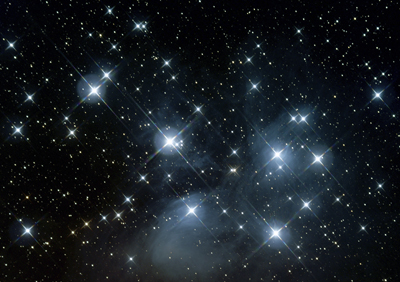
 |

|
I have already written about the ubiquitous nature of DNA on this planet,1 how every life form we can find—plant, animal, bacterial, and so on—uses the same basic replication system no matter how distantly isolated or temporally antique that organism may be. DNA is so successful that it may not have evolved on Earth at all. And that raises the question of how an intelligent species goes about adapting its kind of life to the different kinds of planets likely to be found in nearby solar systems.
In James Blish’s The Seedling Stars from 1957, scientists from Earth visit various exoplanets, sample their environments, and then genetically modify human beings to exist and thrive under those conditions. Perhaps they will have to breathe a different atmosphere, or stand up under heavier gravity, or—in one case—live as microorganisms in a bacteria-rich puddle on an otherwise dry and barren planet. It’s an interesting concept: making humans adapt to the environment on the ground, rather than living under domes of tailored atmosphere or trying to terraform the planet to fit human needs.
But Blish’s story requires a lot of hands-on synthesis. The geneticists and environmentalists on the seeding ships have to do a relatively quick study of the planet, figure out all of its advantages and pitfalls, and then redefine the human structure in exquisite detail—adapting the entire respiratory or alimentary system, adding muscle mass, or—in the case of that puddle—reducing the structure to microscopic size. While the concept makes a good story, I can imagine that if the scientists were wrong by a few degrees of deviation or just a couple of genes, the adapted humans would fail to function or die out in a generation or two.
But then, as we learned in the Biosphere 2 experiment, it is extremely difficult to develop a self-sustaining environment with resident human beings that is not continuously replenished from outside. We can maintain a crew aboard a ballistic missile submarine that operates submerged for months at a time only by having it surface, restock, and refit its systems after every mission. Living that way on the Moon or Mars without a continuously operating and available supply line from Earth may be more of a challenge than we think. Setting up to live under domes on a planet light years from our home world will likely be impossible.
The best way to adapt an organism to an alien planet may be to start small and literally from scratch. Send in a hardy bacterium that has only a few basic requirements for temperature, water, and food. Let it mutate, adapt, evolve, and spread by relying on the remarkable ability of the DNA-RNA-protein system to mutate and thrive according to available conditions. And then see what kind of life form—perhaps as intelligent as human beings, perhaps only as intelligent as dinosaurs and dogs, perhaps no more intelligent than slime molds—develops after a couple of million or a billion years.
Since you wouldn’t be sending your own life form—with its already developed physical characteristics, intelligence level, and environmental requirements—to the new planet, you wouldn’t be staking much on the “humanitarian” value of the colony and its fate. You might not even know that the planet you were sending your probe microbes to was capable of supporting life in the first place. You probably wouldn’t bother if they were going to land on a frozen gas giant or a hell world too close to its star. But close observation and exact measurement is difficult at interstellar distances. You could be wrong by a few degrees of deviation and still be successful in gaining a foothold for life—maybe not life in your own physical form but something sharing your basic gene structure—on a new world.
The odds of complete success—creating a life form that has recognizable intelligence and the ability one day to communicate back to your home world—would likely be small. And the timeframe would likely be long, on the order of millions or billions of years. So you would not place a great deal of trust or effort in the success of any single seeding mission. That being the case, you would not send just one or two missions to the most obvious planets and hope for the best. You would make minimal investment in hundreds or thousands of missions.
You might not be sending your designated seeds of life inside sealed and monitored environments aboard expensive, guided rockets with their own navigation and braking systems, as well as some method for gently sowing your seeds upon arrival. Instead, you might just reduce your hardy bacteria to a spore state that’s able to endure and protect its DNA-RNA-protein system for a thousand or a million years in space, scatter it on a comet or carbonaceous asteroid, and fling it out of your own solar system in any likely direction. Eventually, it will hit some solid body. Possibly, the spores will find a conducive environment and germinate. And maybe one time in a thousand, those seeded bacteria will mutate, evolve, and spread into something like complex life.
Do I think that’s what happened here? Do I think that we—the advanced hominids of planet Earth, product of three billion years of evolution—are the long-lost colonists of some ancient race of intelligent beings who were attempting to seed the stars with microbial DNA? Is there any way to know?
Not really. But it’s as likely an explanation as any other.
1. See Could DNA Evolve? from July 16, 2017. This blog describes the ubiquity on Earth of the DNA-RNA-protein system, not just in its basic pattern or structure but also in its finest details—like the choice among the various purines and pyrimidines for its four bases, the three-codon reading frame, and the limit of just twenty amino acids it uses in protein synthesis. This replication system seems to have evolved here without any significant or lasting competition—or perhaps it didn’t evolve here.